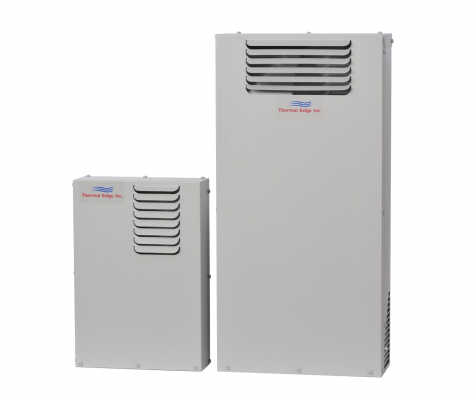What Features Should You Look for in an Air to Air Heat Exchanger?
 An air to air heat exchanger will provide efficient closed-loop enclosure cooling at a fraction of the cost of an enclosure air conditioner. It’s an ideal solution for low and medium heat loads where it’s necessary to use a sealed enclosure to protect equipment from dust, dirt, and pollution.
An air to air heat exchanger will provide efficient closed-loop enclosure cooling at a fraction of the cost of an enclosure air conditioner. It’s an ideal solution for low and medium heat loads where it’s necessary to use a sealed enclosure to protect equipment from dust, dirt, and pollution.
Before purchasing an enclosure air to air heat exchanger or a similar closed-loop cooling product, here are some key features you should consider.
Technology
One of the best methods available is vertical heat pipe technology. This has the advantage of being simple and effective as demonstrated by Thermal Edge’s innovative solution. The heat pipe is partially evacuated and filled with a refrigeration fluid. As it’s heated by the hot air from the enclosure, the refrigerant vaporizes, absorbing heat from the enclosure. The vapor rises to the top of the pipe where it is cooled by the cooler ambient air and condenses, giving up its heat to the external ambient air. The vertical heat pipe has aluminum fins to improve heat transfer. The only power requirement in air to air heat exchangers is used to run the air circulation fans.
Note the ambient external air temperature must always be lower than the enclosure’s required temperature, and the capacity of air to air heat exchangers is measured in watts per degree Fahrenheit or Celsius.
Closed-loop Cooling
A necessary and important feature of air to air heat exchangers is a closed-loop cooling system. The enclosure is sealed and the primary heat transfer takes place through the heat exchanger with a certain amount of heat being lost through the walls of the enclosure. The design of the heat exchanger housing must ensure there’s no possibility of air leakage.
The design of the heat exchanger housing must ensure there’s no possibility of air leakage.
Power Supply
Check the supply voltages that are available as standard; for flexibility these must include 120 and 230 volts AC as well as the commonly used 24 and 48 volts DC.
Enclosure Rating
The air to air heat exchanger should carry the same NEMA rating as the electrical enclosure. A NEMA type 12 rating is required for indoor use and NEMA type 4 for outdoor use. Units installed in locations subject to corrosive substances must have a NEMA type 4X rating and are usually built from stainless steel. Non-compliance will invalidate the electrical enclosure’s NEMA rating. In addition, heat exchangers must be approved by a Nationally Recognized Testing Laboratory such as UL.
For hazardous applications, units should be designed for Class 1, Division 2 Group A, B, C and D areas.
Installation
Air to air heat exchangers may be mounted on enclosure walls or doors. It’s important the manufacturer offers exchangers that fit common dimensions of NEMA enclosures especially those that are relatively narrow. A surface fit with a robust gasket ensures good sealing and easy installation.
A surface fit with a robust gasket ensures good sealing and easy installation.
Service and Support
Consider any regular maintenance requirements; preferably these should be limited to periodic cleaning of the heat pipe and fans. Try to avoid difficult to access designs, and difficult to clean narrow passages. Components such as fans should be designed for quick and easy removal.
Check the availability of spares and replacement units; these should be available on site within a week at the latest. It’s also worthwhile checking the level of technical support that’s available. For example Thermal Edge has a nationwide sales support network with a central support center.
